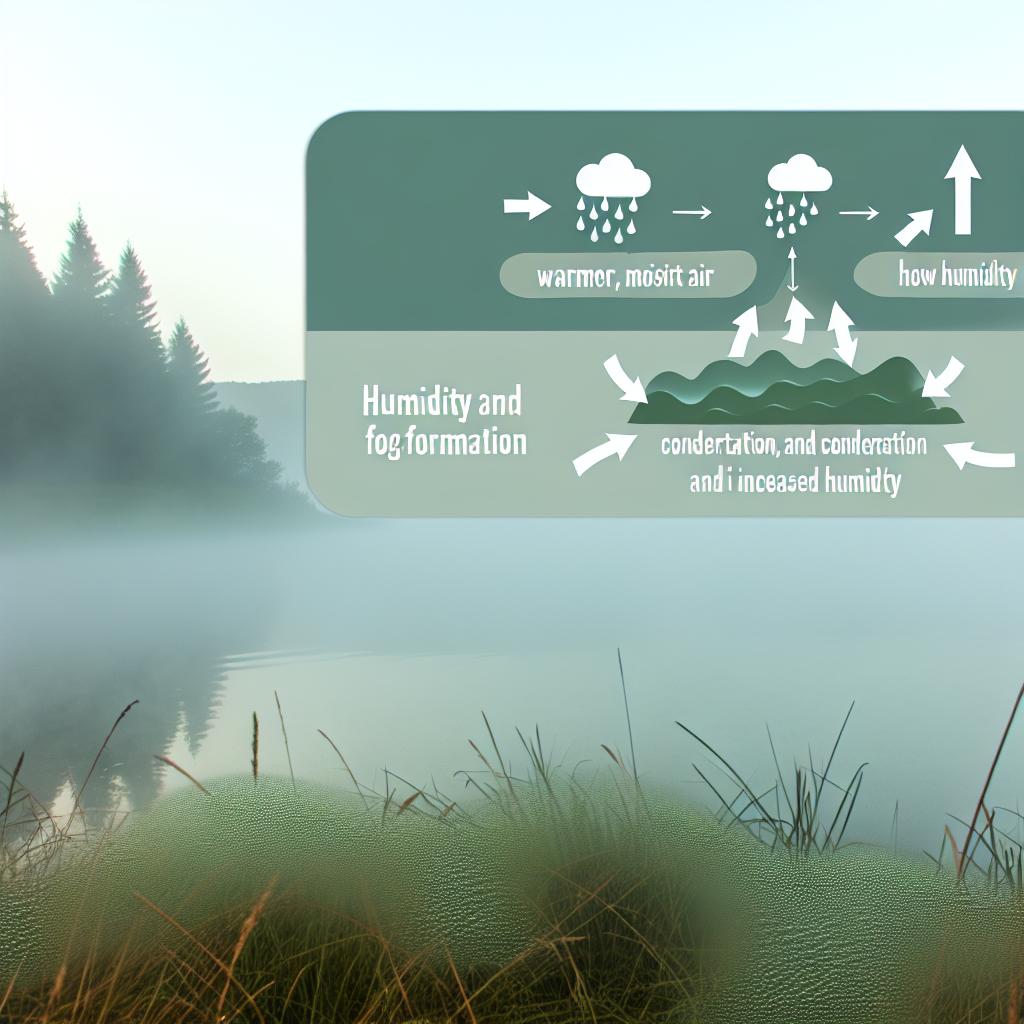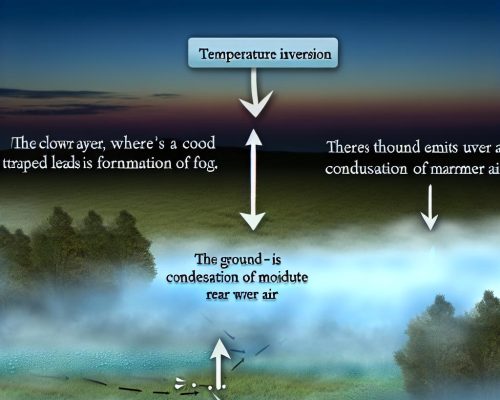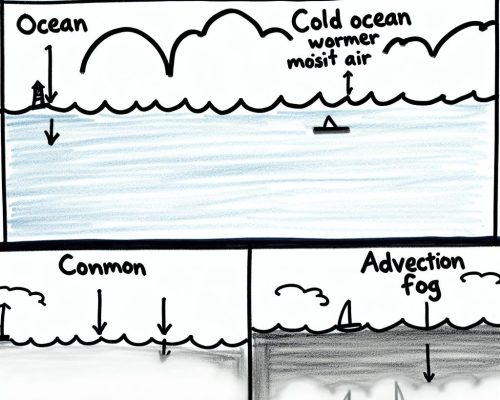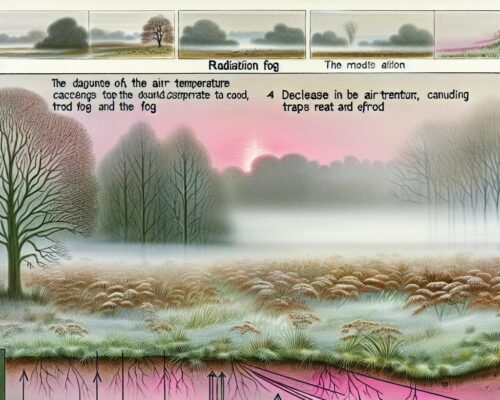
The Role of Humidity in Fog Formation
The Importance of Humidity in Fog Formation
Fog, a visible aerosol consisting of tiny water droplets or ice crystals suspended in the air at or near the Earth’s surface, is a meteorological phenomenon that can significantly impact daily life and various industries. While fog may appear mysterious, its formation is primarily influenced by a specific set of atmospheric conditions, with humidity playing a critical role.
Understanding Humidity
Humidity refers to the concentration of water vapor present in the air. It is a significant component of our climate and weather systems. There are several ways to measure humidity, including absolute, relative, and specific humidity. However, when discussing fog, relative humidity is the most pertinent. Relative humidity is the ratio of the current absolute humidity to the highest possible absolute humidity (which depends on the air’s temperature), expressed as a percentage. When relative humidity reaches near 100%, the air is saturated, and conditions are favorable for fog formation.
The Interplay Between Humidity and Fog
Fog typically forms when air near the surface cools enough to reach its dew point temperature—the point at which the air becomes saturated, and condensation occurs. This cooling can happen through several processes, such as radiant cooling on clear nights, advection of warm moist air over a cold surface, or the mixing of two unsaturated air masses with different temperatures. As the air cools to its dew point, water vapor condenses into tiny droplets that form fog.
Humidity’s role in this process is vital. High relative humidity means that only a small drop in temperature is needed for the air to become saturated, making fog more likely. Conversely, low humidity means a larger temperature decrease is required, reducing the chance of fog formation.
Conditions Favorable for Fog Formation
There are various atmospheric conditions and geographical settings where fog is more likely to form. For instance:
Coastal areas: These regions often experience advection fog, which forms when moist air moves over a cooler surface. The high humidity over oceans or large bodies of water can lead to frequent fog formation, particularly when warm, moist air is present.
Valleys: Regions like valleys, where cold air can pool, often see radiation fog. This type of fog forms under clear skies and calm winds as the ground loses heat overnight, cooling the air above it to the dew point. Higher humidity levels expedite this process, contributing to the likelihood of fog.
Urban areas: Cities can also experience fog due to the urban heat island effect combined with elevated humidity levels from human activity and vegetation.
Conclusion
In conclusion, humidity is an essential factor in fog formation. It determines the ease with which air can reach saturation and begin condensation. Understanding the relationship between humidity and fog is crucial for weather forecasting and addressing the challenges fog presents in transportation, agriculture, and other sectors. For more in-depth analysis on fog and its implications, visit dedicated meteorological resources and research articles to gain further insights into this fascinating atmospheric phenomenon.
Mechanisms of Fog Formation
Understanding the mechanisms behind fog formation requires examining the different processes that lead to saturation of the air. This section describes how cooling mechanisms such as radiation, advection, and evaporation contribute to fog phenomena across diverse climatic regions.
Radiation Fog
Radiation fog forms under clear skies, typically at night, when the ground loses heat rapidly through terrestrial radiation. As the surface cools, the air above it begins to cool by conduction. If the air temperature falls to its dew point, saturation occurs, and fog forms. This type of fog is prevalent in late autumn and winter when nights are substantially longer, allowing more time for the cooling process to occur.
Advection Fog
Advection fog arises when moist air is transported over a cooler surface, prompting the air to cool to its dew point and undergo condensation. This type of fog is often experienced along coastlines. For instance, when sea breezes bring warm, moist air inland, moving over a cooler land surface can drop the air temperature sufficiently for fog to form. This dynamic is particularly common during the late spring and summer months when ocean temperatures lag behind rapidly warming land surfaces.
Evaporation Fog
Evaporation fog, sometimes known as steam fog, forms when cold air passes over warmer water or moist land. The moisture added by evaporation causes the air to become nearly saturated. When the warm, moist air then mixes with the cold air, it cools to the dew point, resulting in fog. This phenomenon occurs frequently over bodies of water, where the contrast between water and air temperatures can create optimal conditions for evaporation fog.
The Impact of Geographical and Seasonal Variations
Geographical and seasonal factors significantly impact fog presence and frequency. For example, coastal areas often witness fog due to the consistent interplay of sea breezes and ocean currents. Likewise, regions with varied topography such as mountains and valleys often see differential heating and cooling rates, contributing to fog formation in lower elevations.
Seasons also play a role in fog frequency. Winter and autumn are typically the foggiest months, especially in temperate regions, due to the longer nights that facilitate more pronounced cooling. During these months, conditions are ideal for radiation fog, enhancing frequency and duration.
Fog Formation and Human Activities
Human activities can influence fog formation, either enhancing or suppressing it. Urban areas, characterized by the heat island effect, may have decreased fog occurrence due to higher ambient temperatures reducing relative humidity at ground level. However, vehicular emissions and industrial activities in cities can introduce particulate matter that serves as condensation nuclei, potentially fostering more fog episodes.
Agricultural practices may also inadvertently affect local fog patterns. Irrigation increases ground moisture, altering local humidity levels and potentially enhancing fog formation during cooler parts of the day. Similarly, deforestation can impact fog patterns by changing the surface roughness and the local hydrological cycle, affecting saturation levels and fog occurrence.
Conclusion
Fog formation is a complex interplay of atmospheric conditions, geographical factors, and human influences, with humidity acting as a common thread. Recognizing the critical role that humidity and other factors play in fog development is important not just for meteorologists but also for industries and individuals that must navigate its challenges. Whether for aviation, agriculture, or transport, understanding and predicting fog continues to be a valuable aspect of meteorological science. Further research can unveil more about the intricacies of this subdued yet influential weather phenomenon, enhancing our ability to adapt to its presence in diverse environments.






